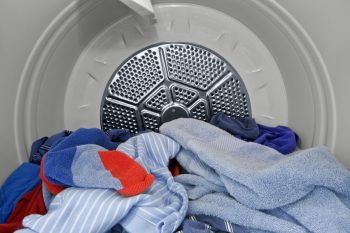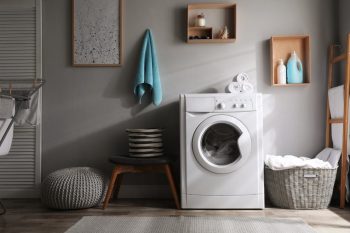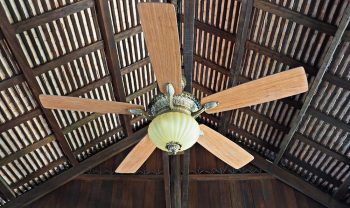
In this comprehensive guide, we will delve into the process of effectively insulating your hot water heater pipes, why it’s important, the benefits, and the materials you need.
To wrap hot water heater pipes, start by measuring the lengths of insulation needed to cover all accessible hot water pipes. Choose your insulation material, commonly foam sleeves or fiberglass pipe wrap. Install the insulation, using fiberglass pipe wrap for gas water heaters on pipes within 8 inches of the flue, and foam sleeves for the rest. Secure the insulation with aluminum foil tape. This process reduces heat loss, conserves energy, and delivers hot water faster.
Why Wrap Hot Water Heater Pipes?
Wrapping hot water heater pipes is a crucial step in maintaining the efficiency of your water heating system. It reduces heat loss, allowing the water to remain 2°F–4°F hotter than if the pipes were uninsulated. As a result, you can lower your water temperature setting, which conserves energy and reduces your monthly utility bills.
Moreover, insulating hot water pipes can deliver hot water faster, reducing the amount of water wasted while waiting for the desired temperature. In colder regions, insulation can prevent pipes from freezing and bursting, thus avoiding potential damage to your home. For cold water pipes, insulation helps control moisture levels, preventing condensation and reducing humidity levels during summer months.
Benefits of Wrapping Hot Water Heater Pipes
There are several benefits of wrapping hot water heater pipes:
- Reduces Heat Loss: Insulation reduces heat loss, which can raise water temperature by 2°F–4°F compared to uninsulated pipes.
- Faster Hot Water Delivery: Insulated pipes deliver hot water faster, reducing the waiting time for hot water when turning on a faucet or showerhead.
- Saves Energy and Money: Insulating hot water pipes can result in 3%-4% annual energy savings.
- Burst Prevention: Insulating water pipes in or near exterior walls can prevent them from bursting in freezing weather.
- Increased Comfort: Insulation adds a few degrees to the actual temperature of household water, improving comfort during showers and other hot water uses.
- Water Conservation: Insulated pipes deliver hot water faster, reducing the amount of water wasted while waiting for the desired temperature.
- Reduced Condensation: Insulating cold water pipes can prevent them from sweating due to condensation, reducing humidity levels in the house during the summer months.
Choosing the Right Material for Insulation
The most commonly used insulation materials for electric water heaters are polyethylene or neoprene foam pipe sleeves. For gas water heaters, it is recommended to use fiberglass pipe wrap for pipes within 8 inches of the flue, and then foam sleeves can be used for the rest.
Polyethylene foam is an efficient and economical form of pipe insulation. It is easy to install and prevents pipes from freezing while maintaining the desired temperature for hot and cold pipes. Neoprene foam is another popular option due to its affordability and effectiveness. Fiberglass or mineral wool insulation materials are best for pipes exposed to hot temperatures, such as those near water heaters or furnaces.
Steps to Wrap Hot Water Heater Pipes
- Measure the Pipes: Starting at the water heater, measure the lengths of insulation needed to cover all accessible hot water pipes.
- Choose the Insulation Material: You can use foam sleeves or fiberglass pipe wrap for insulation.
- Install Insulation: For gas water heaters, use fiberglass pipe wrap on pipes within 8 inches of the flue. After that, foam sleeves can be used.
- Secure Insulation: Use aluminum foil tape to hold fiberglass insulation in place.
Maintenance and Upkeep
Once hot water heater pipes are wrapped, there is minimal maintenance required specifically for the insulation. However, it is essential to perform regular maintenance on the water heater itself to ensure its efficiency and longevity. This includes checking the temperature-pressure relief valve annually, flushing the tank at least once a year to remove sediment buildup, inspecting the anode rod annually, and ensuring the thermostat is set to an appropriate temperature.
Conclusion
Wrapping hot water heater pipes is a cost-effective and energy-efficient way to improve the performance of your water heating system and protect your home from potential damage due to pipe bursts. By following the steps outlined in this guide, you can effectively insulate your hot water heater pipes and reap the benefits of reduced heat loss, faster hot water delivery, and increased comfort in your home.
Frequently Asked Questions
Can I use any type of tape to secure the insulation?
It’s recommended to use aluminum foil tape to secure the insulation. This type of tape is heat-resistant and durable, making it ideal for this purpose.
Is it necessary to insulate both hot and cold water pipes?
Yes, it’s beneficial to insulate both. While insulating hot water pipes reduces heat loss and saves energy, insulating cold water pipes prevents them from sweating due to condensation, reducing humidity levels in your house during the summer months.
How often should I replace the insulation on my water heater pipes?
Typically, pipe insulation can last for many years without needing replacement. However, it’s a good idea to inspect the insulation annually for any signs of wear or damage. Replace it if it appears worn out, damaged, or if it’s not effectively maintaining the temperature of the water.
Is it safe to insulate water heater pipes by myself?
Yes, insulating water heater pipes is a relatively simple DIY task. However, if your water heater uses gas, be careful when insulating pipes near the flue due to the risk of fire. If you’re unsure or uncomfortable performing the task, consider hiring a professional.
Can I insulate the entire length of my hot water pipes?
Ideally, you should insulate the entire length of your hot water pipes. However, in some cases, parts of the pipe may be inaccessible due to the layout of your home. In such cases, insulate as much of the pipe as you can reach.












